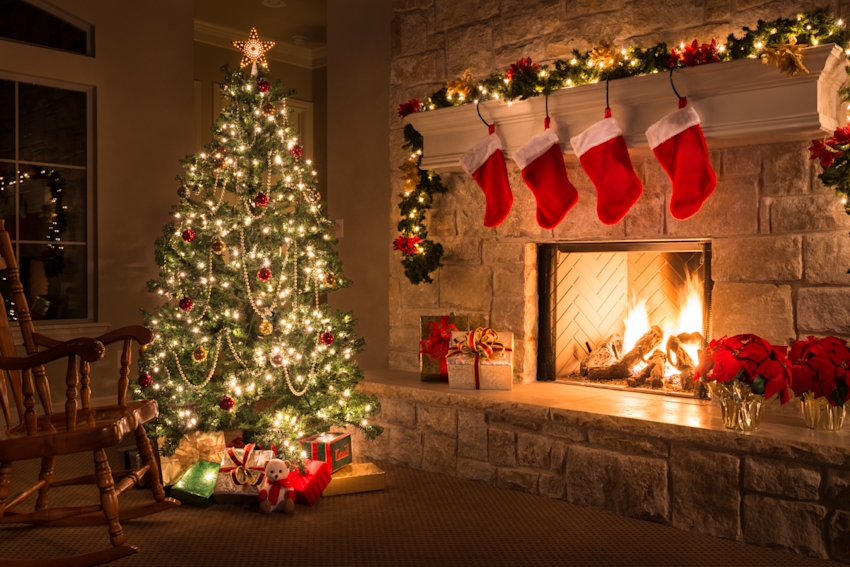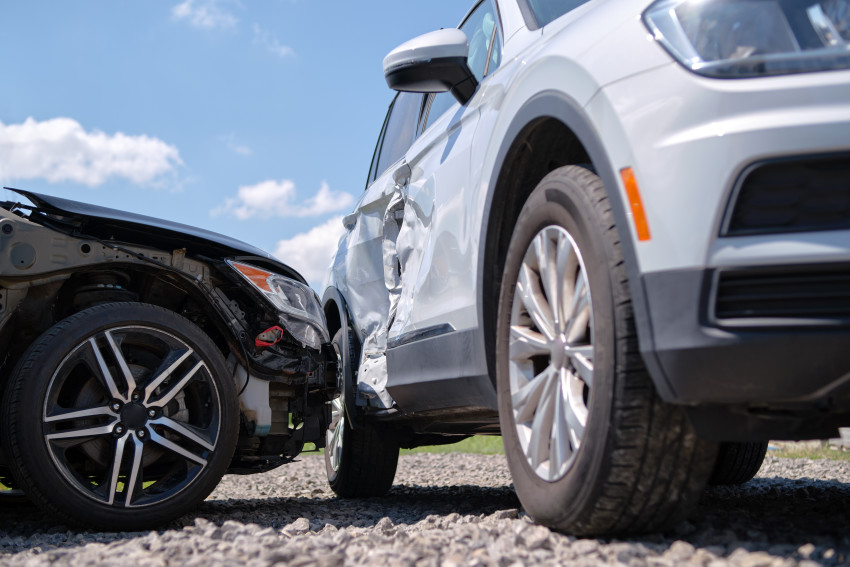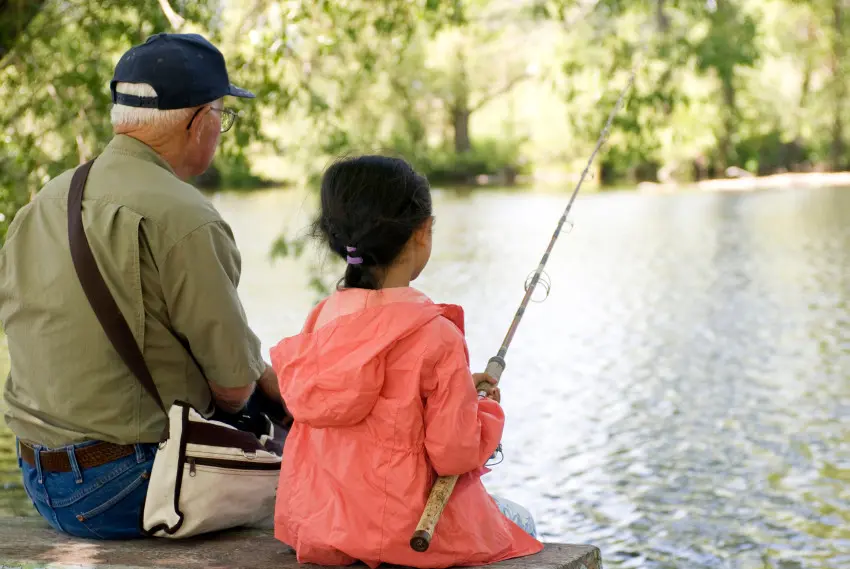
Christmas Tree Safety: Essential Tips for a Joyful and Secure Holiday Season
O Christmas Tree, O Christmas Tree. How lovely are thy branches. Christmas trees bring light and joy into our homes around the holiday season, however they also bring a risk of fires that could damage your home, and more importantly, injure your friends and family.
According to the American Christmas Tree Association, Christmas trees alone result in $13 million in property damage each year. As festive as Christmas trees are, the combination of tree dryness, electrical malfunction with lights, and poorly located heating sources can make for a deadly combination.
To avoid these worst-case scenarios, here are some tips to keep in mind when bringing a live Christmas tree into your home:
Choosing the Right Tree to Prevent Fires
Natural vs. Artificial Trees: Pros and Cons
Natural trees bring that timeless, traditional charm to your home, along with the delightful scent of fresh pine. But remember, they need regular watering to avoid drying out and becoming a fire hazard. Plus, those pesky needles can leave you with extra cleanup.
On the other hand, artificial Christmas trees can offer convenience and peace of mind. They're typically made of fire-resistant materials and require no watering, reducing the risk of fire hazards. You can reuse them year after year, saving you money in the long run. However, they might not capture the authentic look and aroma of real trees, and storing them can take up valuable space.
Selecting A Fresh, Healthy Natural Tree
When it comes to choosing a real Christmas tree, it's all about finding one that's fresh and healthy. That way, you'll enjoy its beauty throughout the holiday season while minimizing the risk of fire hazards. Here are a few tips for selecting a fresh tree:
Check the needles: Give those branches a gentle run of your hand. The needles should be flexible and cling on tight. Avoid trees with brittle or discolored needles, as they might be on the dry side.
Go for green: Look for a tree with vibrant, lush green needles. Steer clear of trees that look dull or have a brownish tinge. Those could be signs of early harvesting or drying out.
Give it a shake: Give the tree a gentle shake or tap on the ground. If you notice a ton of needles falling off, it might not be as fresh as you'd like. A fresh tree will hold onto most of its needles, even with a little jingle.
Look at the trunk: Take a peek at the trunk. It should be sticky with resin, which is a good sign that it was freshly cut. Avoid trees with dry or cracked trunks—they might not stay jolly for long.
Safety Considerations When Purchasing An Artificial Tree
While artificial trees offer convenience and reduced fire risk, it's essential to consider safety factors when purchasing one. Here are some important safety considerations to keep in mind:
Flame resistance: Look for artificial trees labeled as flame-resistant or fire-resistant. These trees are made with materials that are less likely to catch fire and may self-extinguish if a flame pays a surprise visit.
Quality matters: Choose an artificial tree that's made with high-quality materials and meets safety standards. You want something sturdy and well-constructed, especially if you have little ones or furry friends running around.
Give it some love: While artificial trees require less maintenance, it's still a good idea to give them a once-over. Take a peek each year for any signs of wear or damage. If you spot anything worn-out or damaged, fix it up to keep your tree safe and sturdy.
Placing And Preparing Your Christmas Tree
Ready to bring the magic of a Christmas tree into your home? Let's make the process a breeze with these friendly tips for placing and preparing your tree:
Find the perfect spot: Look for a cozy nook in your home where your tree can shine without blocking any important pathways or furniture.
Give it a sturdy foundation: Choose a reliable tree stand that matches your tree's size, ensuring it stands tall and proud. Even with the playful antics of kids and pets, your tree will stay strong. For an extra touch of security, consider using wires or cords to anchor it to a wall or ceiling.
Keep the tree away from heat sources: Set up your tree in a place in your home that's free of heat sources like fireplaces, radiators, candles, or heat vents. If you have a real tree, always keep plenty of water in the tree base to keep the tree vibrant and prevent dryness.
Safely transport and set up the tree: Hit the road with your tree by tying it down securely. Cover it with a blanket or tarp to protect it from the wind and keep those branches safe. Once you're home, handle the tree with care. Place it in the stand and secure tightly with screws or bolts.
Decorating The Tree To Reduce Fire Risk
Time to make your Christmas tree shine with elegance and safety! We've got some friendly tips to inspire your decorating adventure.
Choose Indoor-Safe Lights: To create a magical glow, opt for lights specifically designed for indoor use. LED lights are an excellent choice because they emit less heat and save energy. With their vibrant colors, your tree will shine bright!
Inspect and Test Lights: Before you start decorating, give your lights a quick inspection. Look out for frayed wires, loose connections, or any broken bulbs. Make sure all damaged bulbs are removed and replaced on your tree lights. Don't forget to test the lights before placing them on the tree—plug them in and make sure they're shining beautifully, without any flickering or surprises.
Avoid Overloading Circuits: We all love a dazzling display, but let's be mindful of electrical circuits. Pay attention to the number of lights you connect and the wattage they consume. Follow the manufacturer's guidelines for safe usage, and consider using surge protectors to protect against unexpected power surges. To keep the electrical load balanced, distribute the lights evenly throughout the tree. Safety and a stunning glow go hand in hand!
Flame-Resistant Ornaments: When it comes to ornaments, prioritize those labeled as flame-resistant or non-combustible. These materials are specially designed to reduce fire hazards, giving you peace of mind. And if you're adding tinsel, garlands, or ribbon, make sure they are also flame-resistant.
Ongoing Safety And Fire Prevention Tips For Your Christmas Tree
Maintain Proper Hydration Of Natural Trees
To keep real Christmas trees fresh and reduce the risk of fire hazards, proper hydration is key. Make it a daily ritual to check the water level in the tree stand and add fresh water as needed. A well-hydrated tree is less likely to dry out and become a potential fire hazard
Use Safe Electrical Connections And Extension Cords
Take a moment to inspect your electrical cords for any signs of wear and damage, like exposed wires or frayed insulation. If you spot any issues, it's best to replace the cords to avoid any potential fire risks. Consider using power strips equipped with built-in surge protectors to help safeguard against power surges and minimize potential fire risks.
The Importance Of Owning A Fire Extinguisher
It's always better to be prepared for any unexpected emergencies. As a responsible homeowner, it is highly recommended to have a fire extinguisher readily available, especially during the holiday season. Take a moment to familiarize yourself with how to use the fire extinguisher effectively. Keep it in a visible and accessible spot, so it's easy to get to if needed.
Safety Methods For Christmas Tree Disposal
How To Know It's Time To Get Rid Of Your Tree:
If your tree starts dropping a mess of needles on your floors, that's a sure sign that it's time to say goodbye to your lovely tree. A tree that is losing its needles rapidly or has started to brown may pose a fire risk and should be promptly removed. Additionally, if your tree has been up for an extended period, it's best to err on the side of caution and consider disposing of it to ensure ongoing safety.
Safe Methods For Tree Removal And Disposal:
Start by removing all ornaments, lights, and decorations from the tree. Take care not to damage your home or furniture while doing so. For natural trees, consider wrapping the tree in a sheet or tree bag before moving it to minimize needle shedding. When carrying the tree out of your home, be mindful of doorways, stairs, and any obstacles that could cause accidents. If possible, enlist the help of another person to make the process smoother and safer.
Recycling Options For Natural Trees:
Many communities offer tree recycling programs, which involve chipping or mulching the trees for various purposes like landscaping or soil erosion control. Check with your local municipality or waste management facility to find out about tree recycling options available in your area. By recycling your tree, you contribute to environmental sustainability and support the community's efforts in utilizing natural resources efficiently.
Enjoy Peace Of Mind This Holiday Season
As the holiday season fills our homes with warmth and cheer, it's important to prioritize safety when it comes to our beloved Christmas trees. By following these Christmas tree safety tips, you can create a festive atmosphere while minimizing the risk of fire hazards. From selecting the right tree to proper placement, decorating, and disposal, each step plays a crucial role in keeping your home safe.
At Farm Bureau Insurance of Tennessee, we understand the importance of protecting your home and loved ones during the holidays and all year round. Contact your local agent to learn more about our homeowners insurance and renters insurance policies. We'll help you safeguard your home, apartment, or property. Happy Holidays!
Tennessee Insurance: Read More

What is an Auto Deductible?
October 9, 2024
When it comes to auto insurance, understanding the terminology is crucial to making informed decisions about your coverage. One term that often comes up in discussions about car insurance is the “auto deductible.” Read more

What Is Business Insurance?
December 10, 2024
Whether you are a small business owner or a seasoned entrepreneur, having the right insurance coverage is crucial to protect your assets and mitigate various risks. In this article, we aim to provide you with an in-depth understanding of what business insurance is, its significance, and how it can contribute to your company's success. Read more

What's The Difference Between Term and Whole Life Insurance?
May 31, 2024
Life insurance is a crucial aspect of financial planning, offering peace of mind and financial security for your loved ones in the face of life's uncertainties. In this article, we'll explore the key differences between these two options. Read more
